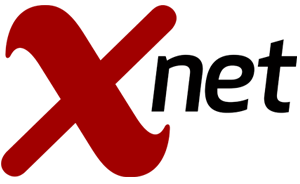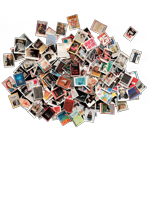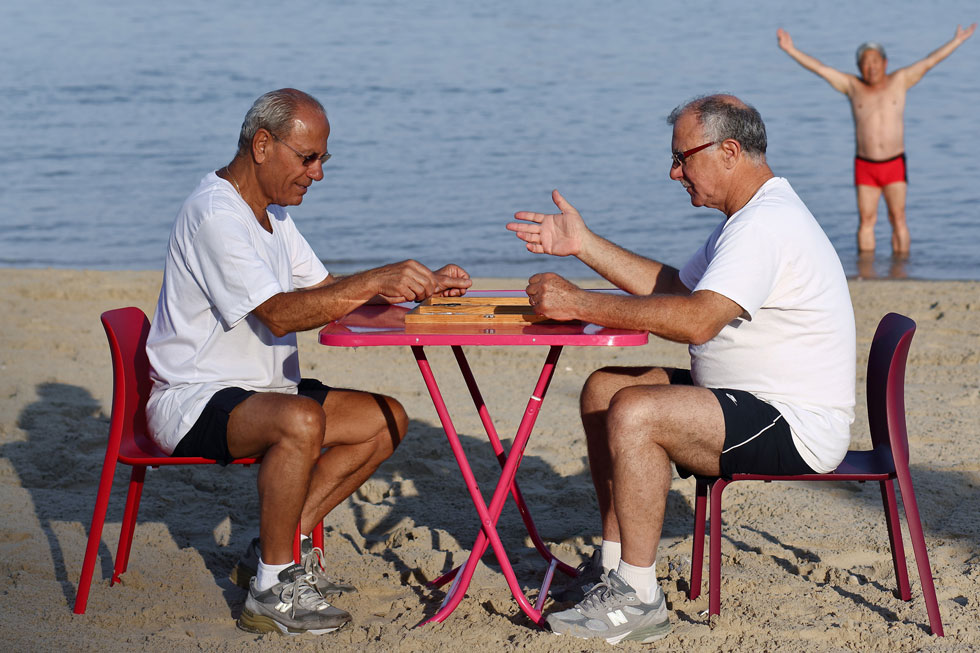This “soap opera” cannot be found on TV, however, but rather, in a women’s newspaper supplement.
Yet Chanale’s popularity is only the tip of the iceberg. Ultra-Orthodox women have gone through dramatic changes in recent years, underscored by popular newspaper sections willing to tackle topics previously considered taboo.
Family sagas that extend over long months are one notable phenomenon, and all women's supplements include such tales. However, feature stories and columns have also begun to attract a regular readership over time.
As a result, ultra-Orthodox women are gradually becoming habitual consumers of women’s journalism, which has been changing its character and scope to meet the demand.
More than 80 percent of ultra-Orthodox women say they read newspapers during the week, says Yael Rosenthal, ultra-Orthodox division director at McCann Erickson Advertising. About a third say they read more than one newspaper a week, leading most ultra-Orthodox newspapers to offer a special women’s supplement.
Photos of women prohibited
A quick browse through the newspapers reveals a different world than the one familiar to secular female readers, both in terms of design and topic selection.
Notably, photos of women are nowhere to be found, although the humor section does feature illustrations if necessary.
Shalhevet Hasdiel, considered a particularly bold journalist, did not dare include images of clothes on a hanger in a feature about ultra-Orthodox fashion designers. She says she vetoed the photos because of a rabbi who objects to such images in newspapers.
“I want my newspaper to meet everyone’s standards,” Hasdiel says, “I don’t want it to be hidden from view. I would like it be out in the open.”
Another ultra-Orthodox women’s supplement solved the photo problem by extensively using pictures of children. Such images are cleared for publication only if the girls are younger than three.
Photographs of men of any age, however, are allowed for publication in all women’s supplements.
Still, Family newspaper group publisher Eli Plai says he must avoid gimmicks that characterize secular women’s magazines.
“There's no fashion, no models, and no gossip,” he says.
Still, those familiar with the state of ultra-Orthodox women’s journalism a decade ago can fully appreciate the changes. What started as a collection of thoughts written by housewives for housewives has become a professional product that increasingly aims to meet the needs of the target audience.
Ultra-Orthodox women’s supplements are characterized, first and foremost, by the plethora of writers. Each supplement boasts a list of 30-40 writers, most of them freelancers. Today, there are more ultra-Orthodox female writers than males.
Few female journalists earn monthly salaries and most of them use pseudonyms or first names only. Only a few female journalists have turned their real names into brands. Hedva Sternfeld and Avigail Meislik, for example, followed their cooking sections with successful books.
However, the phenomenon of female writers who use their real names is growing, reflecting the profession’s increasing legitimacy within the community.
Relationship columns
The biggest change is the courage to address subjects previously considered off limits in the ultra Orthodox world. Rabbi Simcha Cohen’s popular column, for example, offers relationship advice for young couples.
Recently, readers snapped up copies of Cohen’s column, and bombarded his newspaper with letters after he criticized parents in several articles devoted to parent-couple relationships.
Meanwhile, another column considered unthinkable in the past features a psychiatrist who replies to readers’ mental health questions.
"In the Family" editor Hania Schwartz credits herself with shattering many conventions, but is quick to emphasize that everything is subject to review and supervision. Notably, each paper is read by rabbis and granted ideological approval.
Schwartz, known by the pen name Hania Shahar, says she was the first to accompany stories with photos taken by professional journalists. She says she also terminated the practice of using initials instead of full names.
She says her newspaper has featured items on subjects previously considered taboo, such as breast cancer, even though it was referred to as “female cancer” in the article.
“The rabbis allowed us to publish it, because it’s a matter of life and death,” she says.
Yet despite the rabbinical approval, photos or illustrations were not allowed to accompany the story.
Other groundbreaking topics addressed in women’s supplements included post-natal depression, and mothers who do not get along with their children or do not love them equally.
“We slew many sacred cows, but gently,” says Schwartz. “We feel we empowered many women, even those who felt they were weak.”
She says the growing willingness to pursue difficult topics has shattered the homogenous façade previously presented by the ultra Orthodox community.
“All children used to be wonderful and all families were happy,” Schwartz says. “We exposed the difficulties, but also the ways to overcome them.”
Schwartz says one of the most touching reader letters she received came from a man whose wife was suffering from post-natal depression. He was considering divorce but changed his mind after reading the article, she says.
“I see my work as a mission,” Schwartz says. “One such letter makes all the difficulties worthwhile.”


















